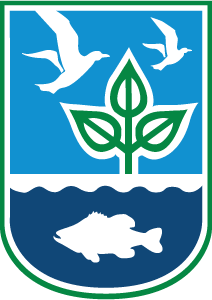Drought
Drought is the natural deficiency of precipitation over weeks, months, and occasionally, years. 30-year precipitation averages, known as climate normals, provide the historical context behind drought. The spatial extent of drought can vary widely, as the Rhode Island's diverse terrain and coastal location create microclimates that respond to drought differently. The State Climate Office, in partnership with the Rhode Island Water Resources Board, provides weekly input to the U.S. Drought Monitor that captures the presence of meteorological, agricultural, and hydrological drought.
Weekly Drought Discussion
Valid: Nov. 25 - Dec. 2 | Updated: Nov. 26
New Shoreham is the only community in Rhode Island that has abnormally dry (D0) conditions. The abnormal dryness on Block Island is long term, as precipitation levels on the island are 2.39” below normal for the last 3 months and 9.05” below normal for the last 6 months. Block Island received a surplus of precipitation in the last 1-2 months. Small ponds have mostly recovered, though larger bodies of freshwater (e.g. Sands Pond) remain low and are roughly equal to levels measured during the 2016 drought. Groundwater supplies are also still recovering on Block Island. The map will be updated on Thursday, December 4.
Report Drought Impacts
Are there drought conditions or impacts near you? Submit a Condition Monitoring Observer Report (CMOR) to help document localized drought.
Troubleshooting
If the above map does not display up-to-date information, you'll need to clear your web browser's cache.
Progression of Drought
-
Meteorological Drought
All droughts begin as a period of dryness (rainfall deficit). Annual seasonal dry periods are not to be considered droughts. Characteristics of meteorological drought include periods of high temperatures, high winds, and low relative humidity. Meteorological droughts increase the occurrences of forest fires.
-
Agricultural Drought
After a few weeks, the agricultural community is impacted by the effects of drought, including precipitation deficits, inadequate soil moisture, and low water levels in irrigation ponds. Plants become stressed and lead to reduced crop yields.
-
Hydrological Drought
Stream flows, reservoir and lake levels, and ground water tables decline after long periods of dryness. Hydrological droughts lag the occurrence of meteorological and agricultural droughts because it takes more time for precipitation deficits to impact water suppliers. View hydrological drought conditions on the Rhode Island Water Resources Board Drought Monitoring Dashboard.
-
Returning to Normal Conditions
When precipitation patterns return to normal, the agricultural community is the first to recover. Soil water reserves are replenished first, followed by stream flows, reservoirs and lake levels, and finally groundwater tables. Users of groundwater, often the last to be affected by drought during its onset, may be the last to experience a return to normal conditions. Typically, 3 months of near normal precipitation and 2 months of normal groundwater levels are required to end a drought.

